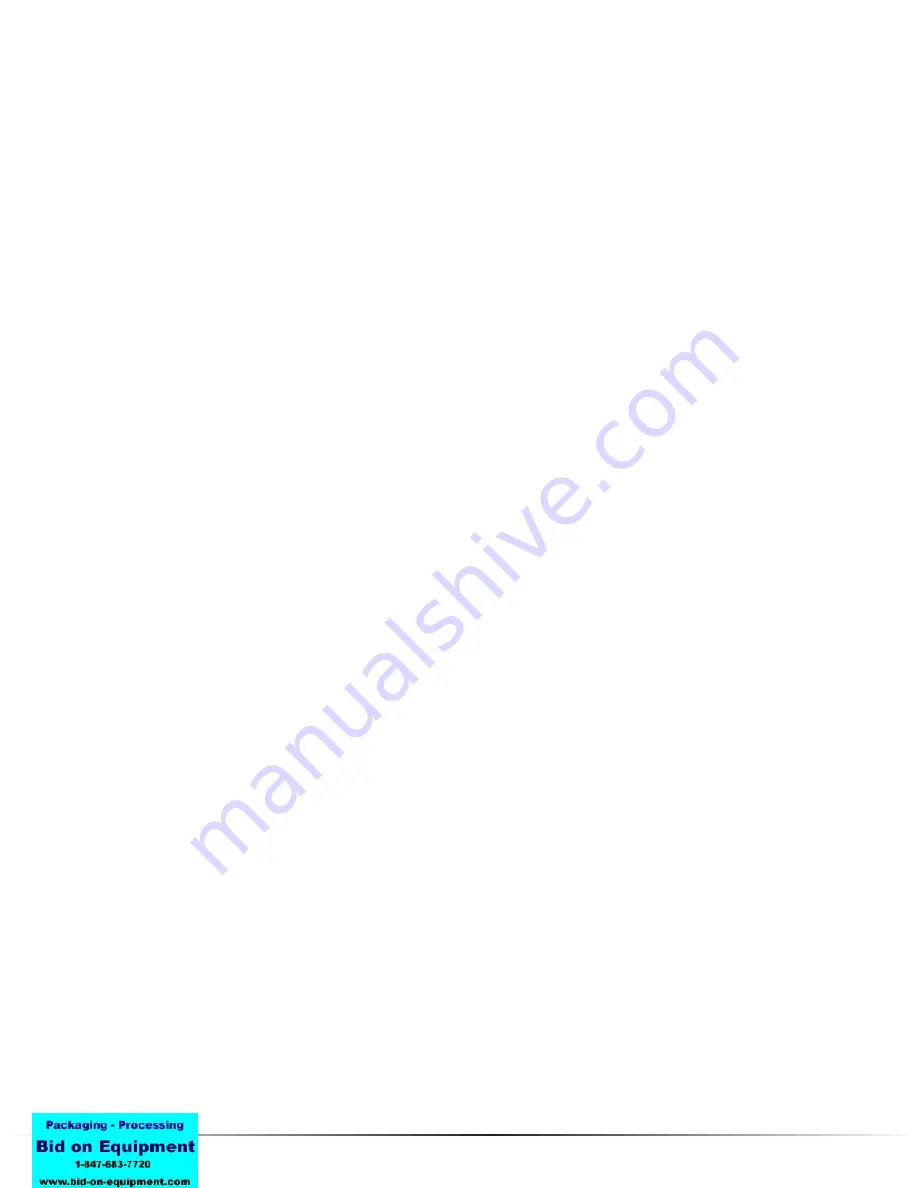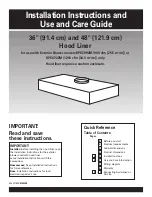
DVJ WHISPAIR
™
Dry Exhauster
|
13
•
Use proper care and good procedures in handling,
lifting, installing, operating and maintaining the
equipment.
•
Casing pressure must not exceed 25 PSI (172 kPa)
gauge. Do not pressurize vented cavities from an
external source, nor restrict the vents.
•
Do not use air blowers on explosive or hazardous
gases.
•
Other potential hazards to safety may also be
associated with operation of this equipment. All
personnel working in or passing through the area
should be warned by signs and trained to exercise
adequate general safety precautions.
Preventive Maintenance
1.
Daily
A. Record the following:
1) Lube oil pressure (if applicable).
2) Lube oil temperature (if applicable).
3) Blower inlet temperature.
4) Blower inlet pressure.
5) Blower discharge temperature.
6) Blower discharge pressure or differential pres-
sure.
7) Motor amperage.
8) Motor voltage, if available.
9) Motor stator temperature, if available.
10) Motor bearing temperature, if available.
B. Observe any abnormalities, i.e. burned paint, unusual
noises, vibration, strange odors, oil leaks, etc.
C. Review log sheets to determine if there are any
changes from previous readings. (It is very important
to look for any changes or trends which might indicate
pending problems).
D. Check oil levels.
E. Record hour meter readings.
2.
Monthly
A. Record bearing housing vibration levels at each
bearing in the horizontal, vertical, and axial planes. Use
velocity (in./sec.) measurements and note any changes
from previous readings. Take a complete vibration
signature (amplitude versus frequency) if any trends are
noted. (It may be helpful to keep a chart on monthly
readings.)
3.
Quarterly
A. Sample lube oil or change.
B. Change oil if the following values are exceeded:
1) Water 100 PPM maximum.
2) Metals 200 PPM maximum.
3) Acid 5.0 to 7.5 Mg/KOH/g maximum.
C. Increase frequency of sampling if any of the above
values show about 20 to 25% increase over the last
sample.
D. Flush all oil reservoirs before filling with clean oil.
4.
Annually
A. Remove an inlet expansion joint, inspect impellers,
measure impeller clearances and note wear patterns.
B. Check coupling alignment, inspect coupling for wear,
and repack with fresh grease.
C. Inspect oil cooler tubes, as applicable.
D. Check all protective switches for proper setpoints and
operation.
E. Check V-belt drive condition and tension.
5. A Preventative Maintenance Schedule should be estab-
lished for driver(s) and all accessories in accordance with
the applicable manufacturer’s recommendation.
Summary of Contents for Roots DVJ WHISPAIR
Page 22: ...DVJ WHISPAIR Dry Exhauster 23 Figure 15 Assembly of 10 thru 12 DVJ V V Belt Drive Splash Lube ...
Page 23: ...24 Dresser Roots Figure 16 Sectional Assembly of 10 thru 14 DVJ V Blowers ...
Page 24: ...DVJ WHISPAIR Dry Exhauster 25 Figure 17 Sectional Assembly of 16 20 DVJ Common Lube ...
Page 25: ...26 Dresser Roots Figure 18 Sectional Assembly of 1016 DVJ V Units ...











































